|
Cabman's shelters, London
Victorian survivors on London's streets ©urban75, Jan 2007, updated Feb 2009
Looking like overgrown garden sheds, these distinctive buildings can still be found on the streets of London, offering shelter for the drivers of hansom cabs and hackney carriages (taxis) since 1875.

Cabman's shelter, Hanover Square, March 2006
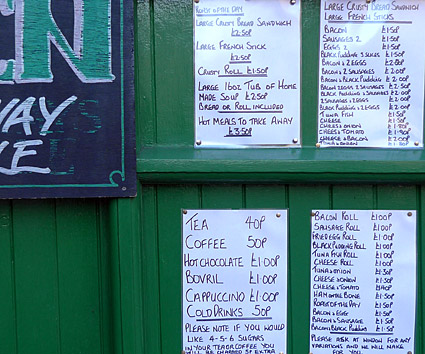
Prices at the cabman's shelter, Hanover Square, Feb 2009
Because cab drivers weren't allowed to leave their vehicles when parked at a stand, it was difficult for them to get a hot meal while at work, so The Earl of Shaftesbury (God bless 'im) and a few philanthropic chums decided to create a cabbie's charity in 1874.
Entitled the Cabmen's Shelter Fund, the charity set out to construct and run shelters to provide cabbies with 'good and wholesome refreshments at moderate prices.'
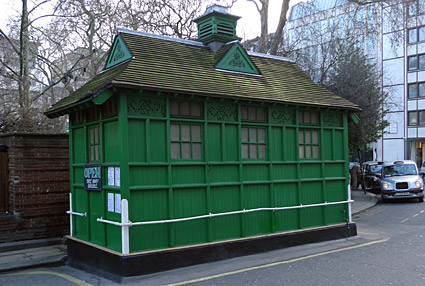
Hanover Square, Feb 2009

Hanover Square, Feb 2009
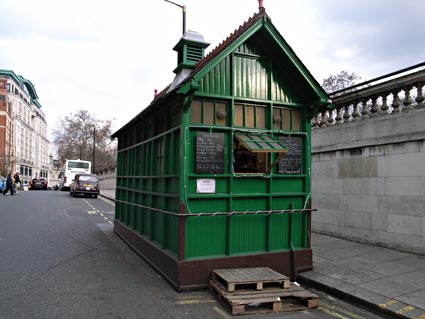
Cabman's shelter, Temple Place WC2
Between 1875 and 1914, a total of 61 shelters were built at cost of around £200 each.
Because the shelters stood on a public highway, the police stipulated that they weren't allowed to be any larger than a horse and cart.
Even with those restrictions, the huts still managed to wedge in a working kitchen and accommodate between ten and thirteen men.

Menu, Cabman's shelter, Temple Place WC2
The shelters came with seats and tables and were stocked with books and newspapers, usually donated by the publishers and other benefactors. Gambling, drinking and swearing were strictly forbidden.
Still maintained by the Cabmen's Shelter Fund, thirteen of these shelters still exist (all now Grade II listed buildings).

Cabman's shelter, Hanover Square, March 2006
The surviving shelters can be seen at:
Chelsea Embankment - near the Albert Bridge
Embankment Place
Grosvenor Gardens - west side of north garden
Hanover Square - north of central garden
Kensington Park Road - outside numbers 8-10
Kensington Road - north side
Pont Street
Russell Square - west corner (previously in Leicester Square)
St George's Square, Pimlico
Temple Place
Thurloe Place, Kensington - opp the Victoria & Albert Museum
Warwick Avenue - Clifton Gardens
Wellington Place, St John's Wood


Cabman's shelter, Russell Square, April 2006

Cabman's shelter, Russell Square, April 2006

Cabman's shelter, Russell Square, April 2006
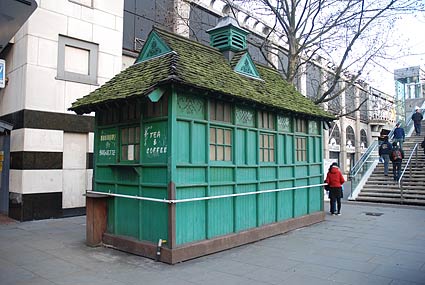
Cabman's shelter, Embankment Place, January 2007
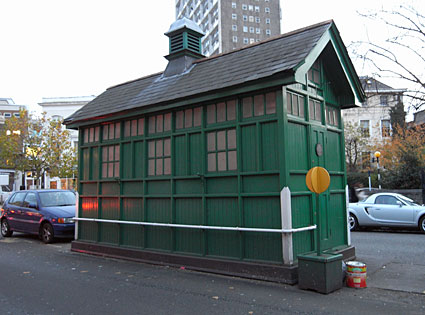
Cabman's shelter, corner of Pembridge Road and Kensington Park Road, Notting Hill, Nov 2007

The Jack The Ripper Connection
An intriguing tale from a Cabman's Shelter, Daily Telegraph, October, 1888.
Mr. Thomas Ryan, who has charge of the cabman's reading-room and shelter in Westbourne-grove, relates a story of a man who made a mysterious statement to him on Sunday afternoon.
According to this narrative a street attendant brought a man to the shelter about four o'clock in the afternoon and said, "This 'ere gentleman wants a chop, guv'nor; can you cook one for him. He says he's 'most perished with cold." Mr. Ryan replied, "Certainly, I will cook you one with pleasure. Come in."
The man accordingly entered and sat down. He was about 5 ft 6 in in height, wore an Oxford cap and a light check ulster with a tippet, which he did not loosen all the time. He had a thick moustache, but no beard, had clean white hands, was round-headed, his eyes very restless, and he seemed to have been drinking. Several cabmen were in the shelter at the time, talking of the murders discovered that morning at Whitechapel.
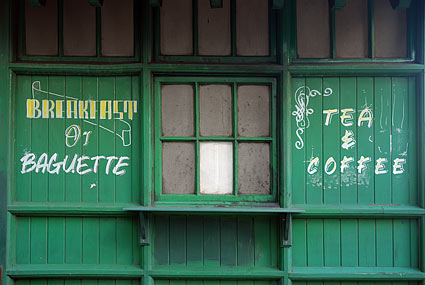
Cabman's shelter, Embankment Place, Northumberland Avenue (by Hungerford Bridge), January 2007
Ryan exclaimed, "I'd gladly give a good deal if I could only find the fellow who did them." The stranger, looking into Ryan's face, quietly replied "Don't you know who committed the murders? I did them. I've had a lot of trouble lately. I came back from India and got into trouble at once.
I lost my watch and chain and £10." Mr. Ryan and the other persons present were much surprised at this statement, but as the man appeared to be under the influence of liquor they did not pay much attention to it, more especially as he produced a bottle, apparently of brandy, out of his pocket and offered them a drink. Mr. Ryan told him they were all teetotallers there, and got him to sign a temperance pledge. He signed the book as "J. Duncan; doctor; residence, Cabman's Shelter; Sept. 30, 1888."
After doing this he said, "I could tell a tale if I wanted," and relapsed into semi-somnolence. Mr. Ryan called his attention to the fact that he had not filled in his proper residence, and the man replied, "I have no fixed place of abode at present. I'm living anywhere." After eating his chop and again offering the company a drink he disappeared, and has not since been heard of.
 More from Casebook.org More from Casebook.org
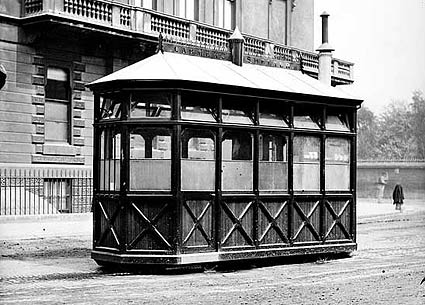
Cabman's shelter, London, circa 1873-1900 [image courtesy of English Heritage]
|